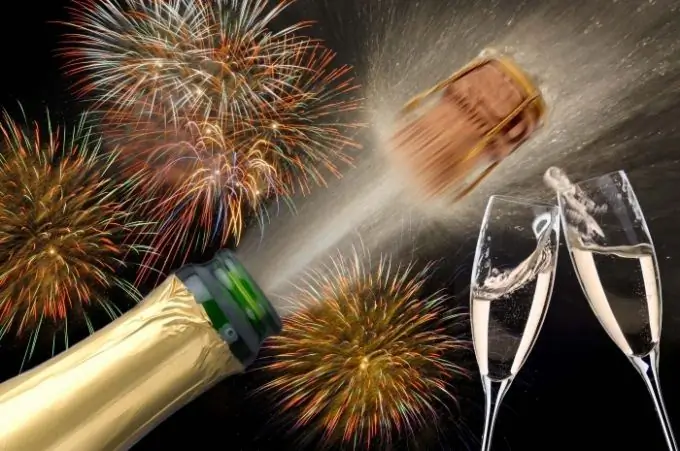- Author Brandon Turner [email protected].
- Public 2023-12-17 01:37.
- Last modified 2025-01-24 11:11.
In everyday life, any wine with bubbles that makes a sound when opening the cork is called champagne. But in general, this word is not suitable for every sparkling grape drink. Let's figure out what is the difference between champagne and sparkling wine.

All wines are divided into two main categories - still and sparkling. The latter differ from the former in the content of carbon dioxide in them. Thus, a drink with bubbles and a loudly flying cork, which is usually placed on the New Year's table, can in any case be called sparkling wine.
What, then, is champagne? Isn't that synonymous with sparkling wine? Not really. Please note that the term "sparkling wine" is used in most of the wine lists of good restaurants.
Firstly, "champagne" is a toponym, the French winemakers stubbornly insist on this, claiming that only those sparkling wines produced in the Champagne province can be called by this word. And it is difficult to argue with them, despite the fact that the word has long gone beyond the boundaries of this region. Moreover, the production of a drink in the Champagne province does not mean that it will fall into this category. A special international committee of champagne wines has approved a list of production rules for all those who want to call their products "champagne".
Champagne can only be made from certain grape varieties. There are six of them, but three are most commonly used - pinot noir, chardonnay and pinot meunier. It is also assumed that the berries must be picked by hand, squeezed gently, without removing the stalk. The rules have clear instructions on how to cut the vine, spin it, when to harvest, and the norms for the organoleptic characteristics of the Wingorad are also prescribed. It is necessary to withstand champagne for at least one and a half years. And of course, in the case of champagne, artificial carbonation is excluded - the drink can be produced only by the secondary fermentation of wine in the bottle.






